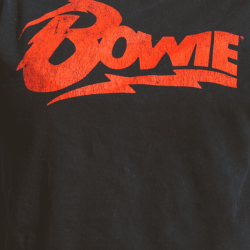The thing I would like to kill off this year?
The pervasive perception that motivation is the magic key to unlocking any behaviour, from purchasing a product to taking care of our health.
As communicators, we seem to have a fixation on motivation.
Take exercise as an example. Most encouragement towards exercise is based on reasoning: we hear messages about good cardio fitness cutting heart disease, or strength training burning more calories. But we all know these facts. And yet we don’t all train regularly. If motivation was all that was needed, we’d all be as fit as Joe Wicks. But we’re not.
It’s easy for marketers to hand out information and wait for customers to act on it. But it often doesn’t work. Thankfully, there are ways to boost behaviour change by supplementing motivation with some simple tactics.
Intention is not action
The problem is the gaping space between what we want to do and what we actually do. It’s called the intention-to-action gap and has been widely researched by psychologists.
They have discovered that an excellent way to bridge the gap is to employ triggers to stimulate the desired behaviour. Think of triggers as a catalyst, a way of converting intention into action.
Evidence for the ineffectiveness of motivation alone comes from a 2002 study by Sarah Milne at the University of Bath. She split 228 participants into one of three groups, each given different levels of information and instructions for the study:
- Control: just told to note down how often they exercised
- Test group 1 (Motivation): alongside tracking their exercise they were also given information about the benefits of exercise in terms of reducing heart disease by exercising from a young age. When questioned this group said they were highly motivated to exercise.
- Test group 2 (Implementation-Intention): received the same health information as group 2, but they were also asked to plan and write down exactly where and when they would exercise over the next week
When Milne monitored how much the groups exercised, the results were significant:
- Control: 35% exercised at least once per week
- Test cell 1 (Motivation): 38% exercised at least once per week
- Test cell 2 (Implementation-Intention): 91% exercised at least once per week
So, group 2, in the form of reasons to exercise, had very little impact on behaviour. But a clear and concrete plan of action was highly effective.
These plans are called implementation intentions, and include details of how, when and where you are going to undertake a particular behaviour. There is now a large body of evidence to show that if people make an implementation intention, they are much more likely to follow through with the action.
Implementation intentions work because in making one, you’re creating your own trigger. Let’s say you’ve specified that you’ll exercise after breakfast on Tuesday. When Tuesday breakfast time comes around, that’s your trigger — you are reminded to act.
What does this mean for marketers?
By all means, boost a shopper’s motivation to buy your product or service. But be aware that this alone might have less impact than you expect.
You should also consider triggers. Whilst you may not be able to get customers to write down a personal implementation intention for your product, you can certainly consider how best to provide public triggers. What event, occasion or other moment could prompt your customers to think about you? We have Taco Tuesday, for example. This trigger was apparently set up originally by a cafe in 1933.
A similar example is the automatic connection we all make between champagne and celebration. Yes, we like champagne, so we’re motivated to drink it. But usually we don’t — we need a celebration, which will act as a powerful trigger to act on this motivation. The connection was established by the big champagne houses in the 18th century.
Other successful uses of triggers are more recent. The example below shows how Nationwide tied their desired behaviour to a specific day. This helps customers set an intention to save on the day they’re paid.
Nationwide use paydays as a cue for saving with their tagline “Payday = Saveday”
Another good example is the UK Government’s campaign to encourage people to check their smoke alarm. They created a ‘Fire Kills’ campaign that applied implementation intentions. The campaign encouraged people to check their smoke alarms twice a year, using the clocks changing as a trigger.
Over the course of the campaign, deaths from fires in homes fell by 41 people, delivering an ROMI of £7.12 for every £1 invested. The campaign was so effective that it won an IPA effectiveness award.
So, think about how you could suggest or provide effective prompts that encourage commitment to an action. And let’s kill our reliance on motivation as means of behaviour change.
Richard’s new book on applying behavioural science to marketing, The Illusion of Choice, is now available to buy.
Featured image: Jill Evans / Pexels































